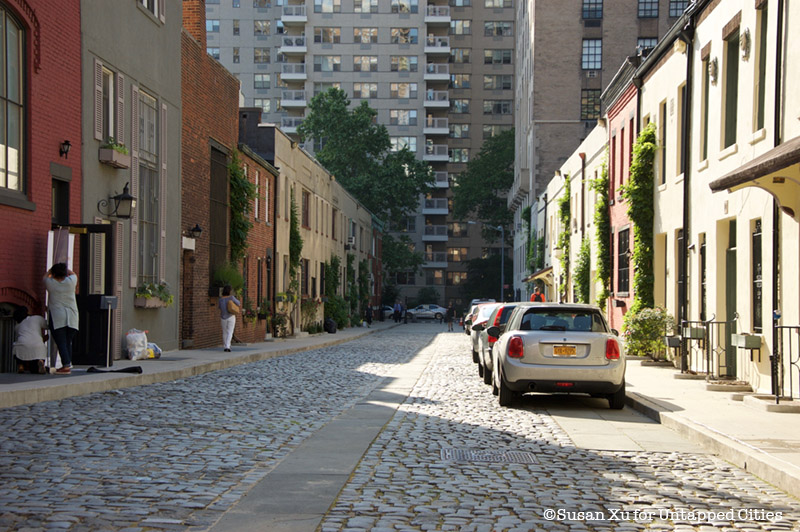
Described as a “true feast for the eyes,” the Chelsea Music Festival kicked off its 8th season on June 9th, presenting nine days of performing, visual and culinary arts events held in some of New York City’s most unique venues. We were fortunate enough to attend an evening music performance housed inside a Greenwich Village building that has piqued our interest for some time now: the Deutsches Haus at NYU, “New York’s leading institution for culture and language of the German-speaking world.” Located on 42 Washington Mews, it sits at the corner of a cobblestone alley that runs through Washington Mews, a private, gated street between Fifth Avenue and University Place, right across from Washington Square Park.
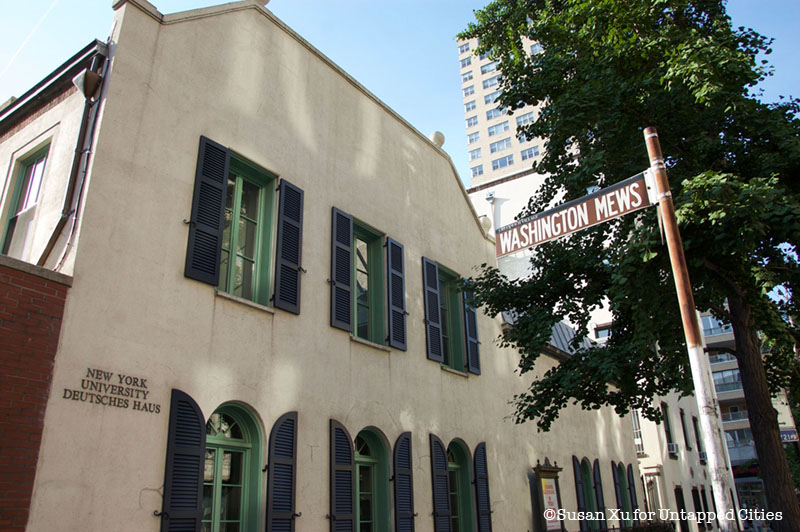
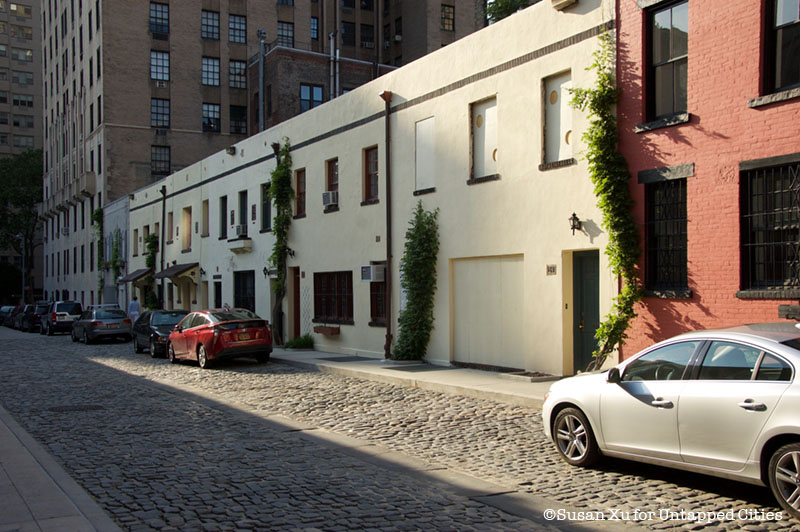
As New Yorkers already know, Greenwich Village is filled with winding streets and hidden alleys. With its stately charm, the neighborhood provides a picturesque backdrop for movies, performances and ideas to flourish. Unsurprisingly, the Deutsches Haus was a fitting choice as a venue for the Chelsea Music Festival’s June 14th performance, entitled “Vehicles of Time — Cage, Van & A Firebird.”
Celebrating the festival’s theme of “Measuring Time,” the event included a private art exhibition, a panel discussion exploring how time and story are teleported through music, and performances of Beethoven’s Spring Sonata, John Cage’s Four and Stravinsky’s Firebird Suite.
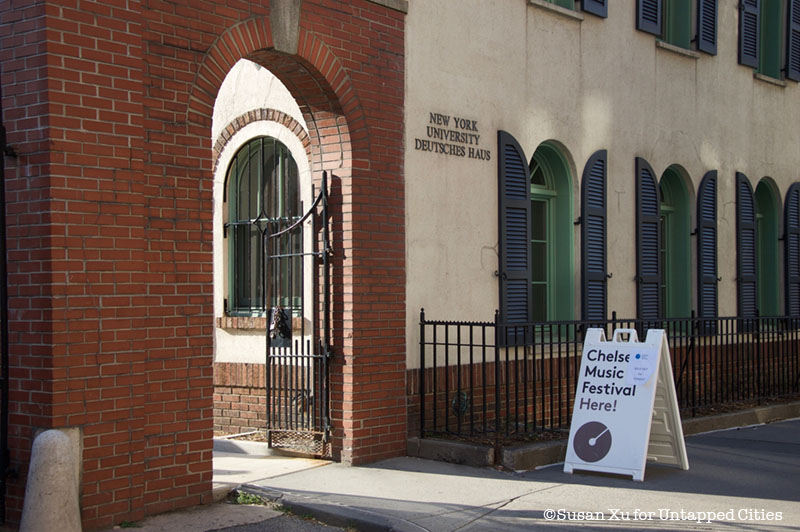
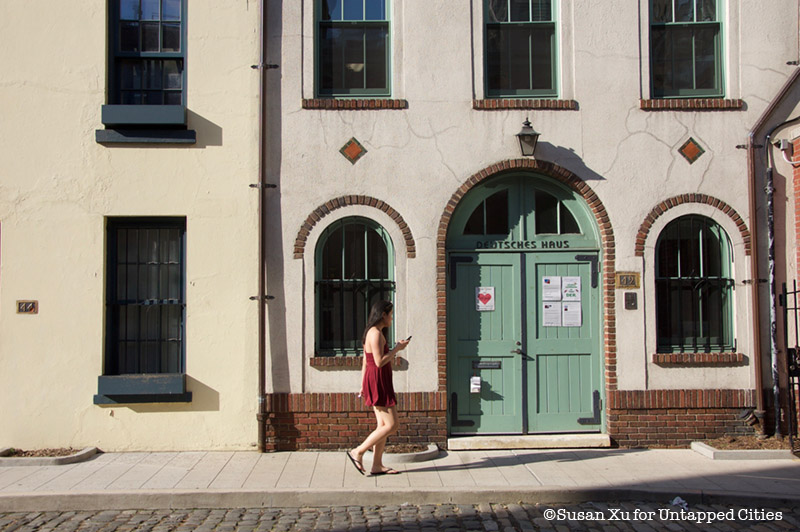
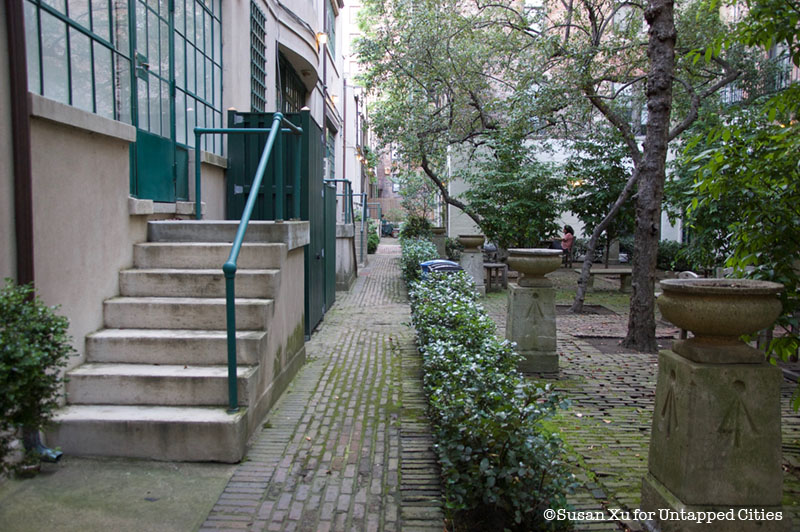 An outdoor courtyard behind Deutsches Haus and other Washington Mews buildings
An outdoor courtyard behind Deutsches Haus and other Washington Mews buildings
With its beige facade, lined with red brick and decorated with a green double door and window shutters, the Deutsches Haus leaves a lot to the imagination. The building’s exterior immediately hints at a long and storied history: in fact, according to a timeline displayed inside the Haus, Washington Mews was originally part of Minto Farm, owned by noted sea captain Robert Richard Randall in the 18th century. (It was also a section of a Lenape trail that once connected the Hudson and East Rivers).
In 1801, Randall bequeathed the land to Sailors’ Snug Harbor — the same organization that constructed Staten Island’s famous 83-acre cultural center — with the request that a home for the “elderly and destitute sailors” be built on the parcel upon his death. By the 1830s, however, the Mews were eventually laid out as an alley for horse stables and carriage houses that served townhouses facing Washington Square, and Randall’s home for sailors was ultimately constructed in Staten Island.
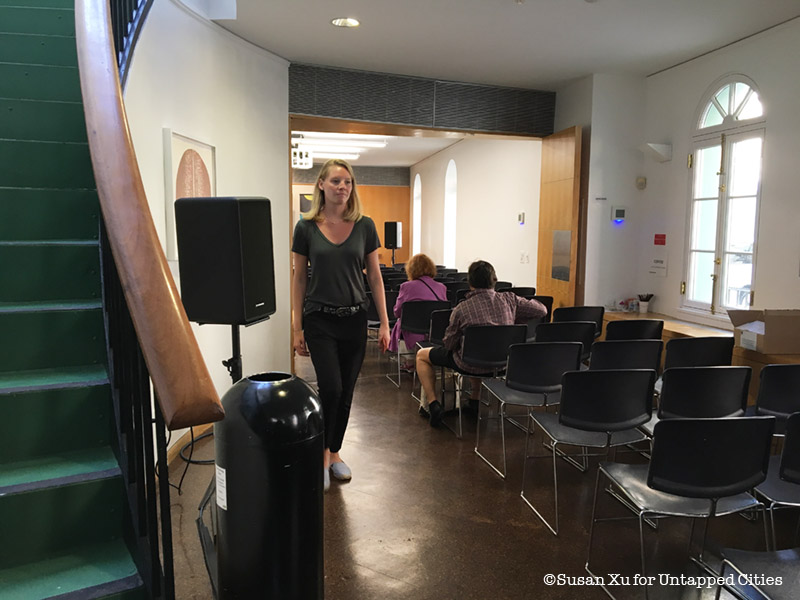 The main floor of the Deutsches Haus
The main floor of the Deutsches Haus
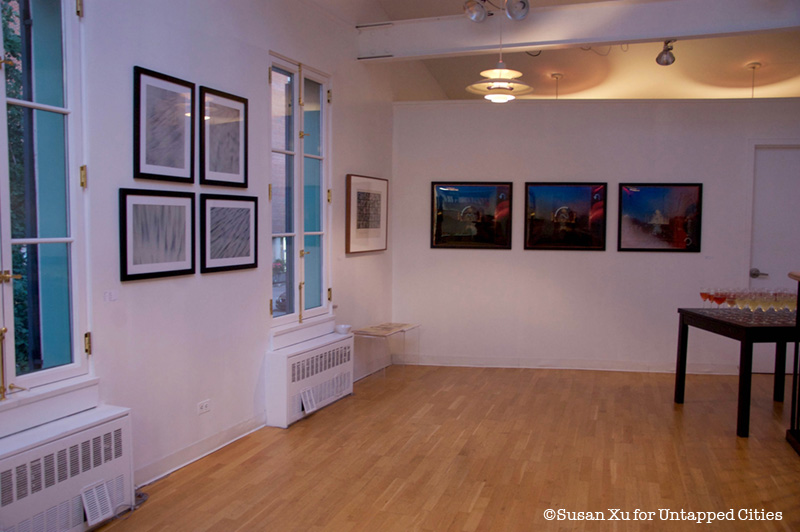 The upstairs floor of Deutsches Haus served as an art gallery
The upstairs floor of Deutsches Haus served as an art gallery
Over the years, 42 Washington Mews (what is now Deutsches Haus) came to house a variety of shops, including the Busy Bee sandwich shop, Banta carpenter, a Chinese laundry and eventually, a studio for sculptors. Following its conversion into an artistic hub, it was used between the years 1917 and 1949 by various artists including Paul Manship, Victor Frisch, Gaston Lachaise and Robert Ingersoll Aitken. Then in 1950, New York University leased the building for use as offices and faculty housing, and since 1977, it has served as a unique space for cultural, intellectual, and artistic exchange with Germany, Austria, and Switzerland.
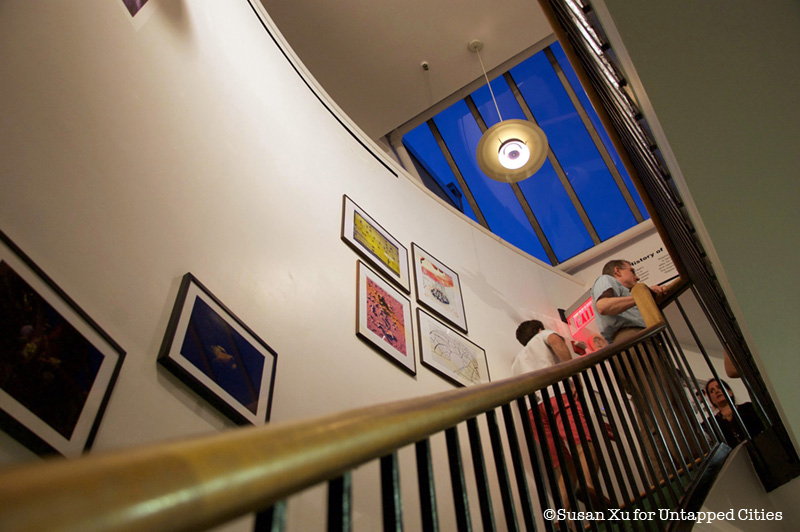
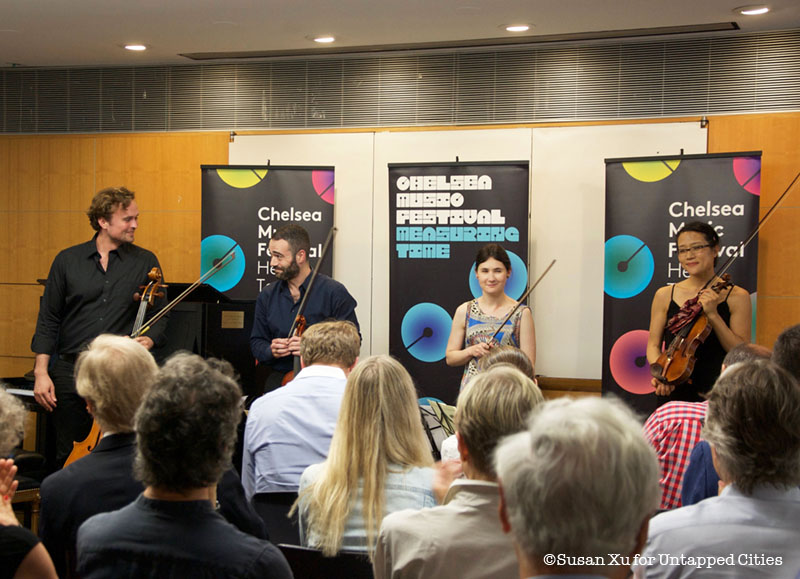
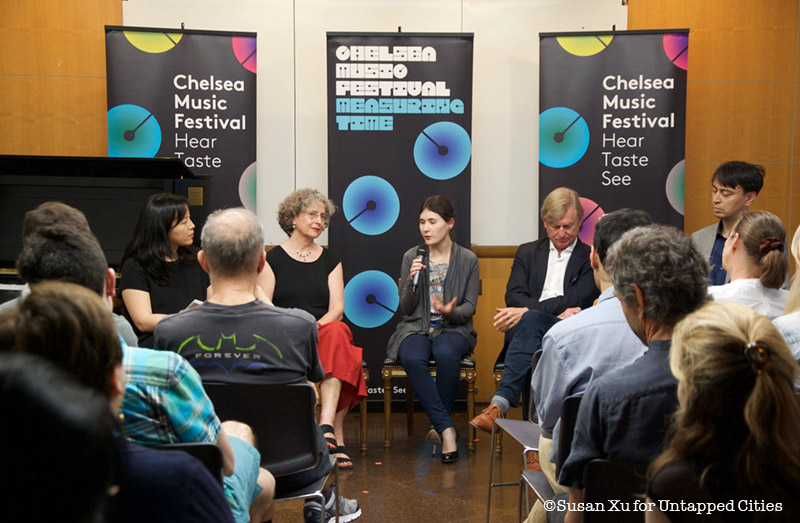
The building has since been restored to its original 1821 plan, but the interior is modern, with a staircase leading up to an additional floor. As a venue for the Chelsea Music Festival, the space can only be described as cozy and quaint: the open room upstairs was transformed into an art gallery, filled with a collection of photographs and other works that revolved around the theme of time. The performance itself took place on its main floor, where chairs were arranged around a dedicated performance area. Very much like the rest of the space, the entire event was intensely intimate, allowing the audience to directly interact with each other and the performers.
It was an experience unlike any one would expect from a classical concert, where musicians are traditionally separated from the crowd by distance, anonymity and an elevated stage. The music was allowed to flood the room, extending in every direction and filling every corner of the building.
Next, check out 10 Remaining Mews of NYC’s Horse-Drawn Carriage Past and 6 Hidden Alleys and Small Private Streets in NYC’s Greenwich Village.






